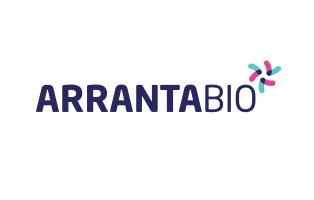ENTERPRISE SPONSOR: Microbiome
Arranta Bio, one of That's Nice's Road to 2021 sponsors, discusses how the company is envisioning the future of the pharma/biopharma industry.
Increasing evidence points to the gut microbiome playing a larger role than previously thought in health and disease. Over the next year (and beyond), we will see more investment into the microbiome, as pioneer companies advance live biotherapeutic products (LBPs) in their pipeline and key clinical data becomes available.
Transformative Technology
Analytics in the LBP arena are outdated. A full battery of analytical assays needs to be developed, to eventually become the regulatory standard in the industry. Four distinct areas need to be improved:
1. Characterization: Routinely, isolates are taken from fecal matter and are the basis of potential therapies. The exact origins where these isolates thrive and function within the lengthy gastrointestinal tract remain largely unknown, and the assays/techniques to predict those origins are largely unavailable. Phase-appropriate qualification is paramount during early clinical trials; once a better understanding is achieved for the analytics, we can convert those assays to quality-indicating assays for routine characterization and stability-indicating testing.
2. Quality indicating: Colony-forming units (CFUs) are the common assay to-date to determine potency. However, CFUs are not always the best predictor of potency. For LBPs targeting indications within the small intestinal tract (GIT through the small intestine is 4–6 hours), lag phase may be just as important, if not more important, as CFUs. Other potency tests that can be employed include assays that measure microorganisms’ ability to metabolize a target analyte, to measure its potency.
3. Speed: Growth-based assays can be very lengthy, ultimately slowing the decision-making process. Therefore, there is a true need to be able to test and potentially release in hours instead of days to weeks. The speed of release of a product is rate limited by USP <61> Total Yeast and Mold Count (TYMC) analysis, as the minimum incubation is 5 days. Molecular methods and the speed they bring can be huge in the assessment of formulation changes and optimization.
4. Efficacy indicating: Assays to better predict clinical efficacy (engraftment, host/organ interactions, etc.) are currently lagging. Not only are current assays lacking or deficient, larger, validated animal models that have more representative human GIT are not there. Innovations in these areas will speed the development and assist in creating better products for our innovators.
Trend Acceleration
COVID-19 accelerated trends already underway. On a fundamental level, we have seen clearly that the rapid adoption of technologies and collaboration tools have made effective, flexible work possible, while continuing to allow us to build an organizational culture of mission-driven teamwork.
Arranta Bio is building on over a decade of experience in manufacturing live biopharmaceutical products and is positioned to lead in microbiome development as it grows.
Arranta Bio is committed to being a best-in-class CDMO supporting pioneering companies in the microbiome sector. Over the next decade, this area is expected to mature with products commercialized and diseases within larger populations addressed. Arranta Bio is building on over a decade of experience in manufacturing live biopharmaceutical products and is positioned to lead in microbiome development as it grows.


